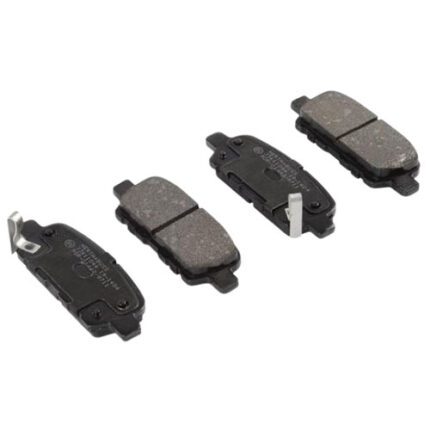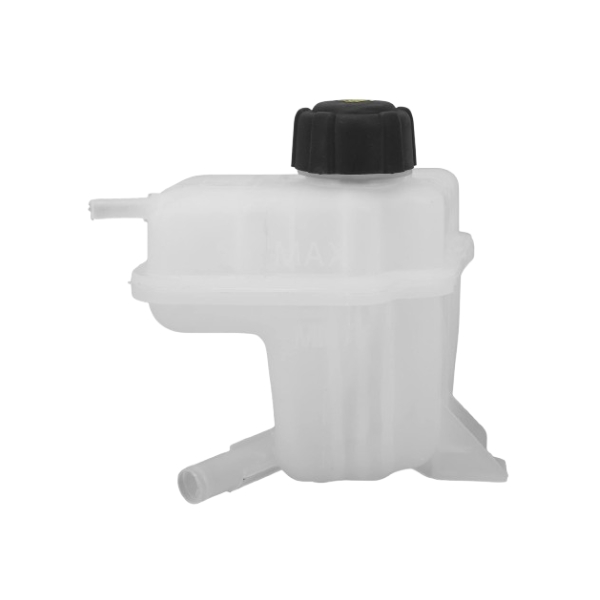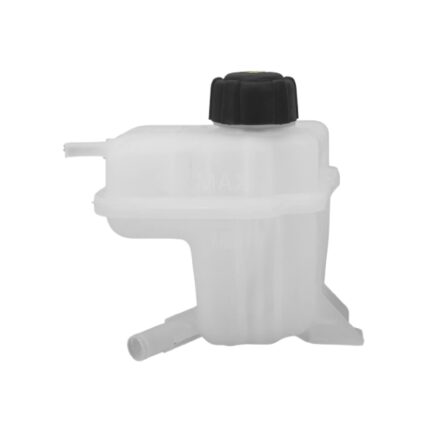Get Coolant Expansion Tank Nissan Dualis in Kenya
A Coolant Expansion Tank is an essential component in a vehicle’s cooling system, designed to regulate coolant levels, accommodate fluid expansion during temperature changes, and maintain the system’s pressure balance. Though it may appear as a simple plastic or metal reservoir, it plays a critical role in keeping the engine within optimal operating temperatures, preventing overheating, and ensuring long-term reliability.
Function and Purpose
The cooling system in an engine operates under specific pressure to raise the boiling point of coolant, allowing it to absorb more heat. As the engine runs and the coolant heats up, it expands. Without an expansion tank, this expansion could lead to excess pressure, leaks, or coolant loss.
The coolant expansion tank serves several key purposes:
-
Accommodating Coolant Expansion: It provides extra space for coolant to expand when heated.
-
Maintaining Proper Pressure: Helps regulate pressure levels through an integrated cap or overflow system.
-
Preventing Coolant Loss: Stores excess coolant and returns it to the radiator when temperatures drop.
-
Air Separation: Helps remove trapped air from the cooling system, which can cause overheating or inefficient heat transfer.
-
Monitoring Coolant Level: Allows easy visual inspection of coolant quantity through translucent material or marked level indicators.
Design and Construction
A typical coolant expansion tank is designed to handle repeated heating and cooling cycles while resisting corrosion from coolant chemicals.
Key design features include:
-
Durable Material: Commonly made from high-strength plastic, reinforced polymer, or corrosion-resistant metal.
-
Translucent Walls: Allow for quick visual checks of coolant level without opening the cap.
-
Level Markings: “MIN” and “MAX” indicators for proper fill reference.
-
Pressure Cap: Regulates internal pressure, allowing excess pressure to escape safely.
-
Hoses and Connectors: Multiple inlet/outlet points for coolant circulation and overflow return.
-
Mounting Points: Designed to secure the tank in an accessible location within the engine bay.
How It Works in the Cooling System
-
Coolant Expansion: As the engine warms, coolant absorbs heat and expands, increasing system pressure.
-
Pressure Regulation: The pressure cap on the expansion tank allows coolant to flow into the tank once a certain pressure is reached.
-
Coolant Storage: The expanded coolant stays in the tank until the engine cools down.
-
Coolant Return: As temperatures drop and coolant contracts, vacuum pressure draws the stored coolant back into the radiator, maintaining proper levels.
-
Air Removal: Any trapped air bubbles in the system can escape into the expansion tank, preventing hot spots.
Difference Between Expansion Tank and Overflow Tank
While they are sometimes confused, there is a distinction:
-
Overflow Tank: Non-pressurized reservoir that collects excess coolant when pressure forces it out of the radiator cap.
-
Expansion Tank: Integrated into the pressurized cooling system, directly connected to the radiator or engine, and actively participates in coolant flow.
Common Signs of a Faulty Coolant Expansion Tank
A damaged or malfunctioning tank can lead to overheating, coolant leaks, or pressure issues. Symptoms include:
-
Visible Cracks or Leaks: Coolant seeping around the tank or connectors.
-
Frequent Coolant Loss: Needing to top up coolant more often than normal.
-
Coolant Odor in Engine Bay: A sweet smell indicating a leak.
-
Overheating Engine: Inadequate coolant levels causing temperature spikes.
-
Discolored or Contaminated Coolant: Rust or oil traces in the tank suggest internal contamination.
-
Loose or Faulty Cap: Causing pressure loss and boiling coolant.
Causes of Expansion Tank Failure
-
Heat Fatigue: Constant heating and cooling weaken materials over time.
-
Coolant Chemical Reaction: Certain coolant types may degrade incompatible plastics.
-
Excess Pressure: Faulty thermostat or radiator cap increasing system strain.
-
Impact Damage: Engine bay vibration or collision damage.
-
Aging: Prolonged exposure to heat and coolant chemicals leads to brittleness.
Maintenance and Care
To ensure the coolant expansion tank operates effectively:
-
Regular Level Checks: Inspect coolant level when the engine is cold.
-
Use Recommended Coolant: Prevents chemical reactions that can damage the tank.
-
Inspect for Cracks or Warping: Address small leaks before they worsen.
-
Replace the Pressure Cap if Needed: A faulty cap can compromise system pressure.
-
Flush Cooling System Periodically: Removes sediment and buildup that can clog passages.
Installation and Replacement Process
Replacing a coolant expansion tank is generally straightforward:
-
Allow Engine to Cool: Prevents burns from hot coolant.
-
Drain or Isolate Coolant: Depending on design, partial draining may be necessary.
-
Disconnect Hoses and Sensors: Loosen clamps and remove any electrical connections for level sensors.
-
Remove Mounting Bolts or Clips: Detach the tank from its bracket.
-
Install the New Tank: Secure it in place and reconnect hoses/sensors.
-
Refill and Bleed System: Top up coolant and remove air pockets to prevent overheating.
-
Test for Leaks: Run the engine to confirm proper function.
Impact on Engine Performance
A properly functioning coolant expansion tank:
-
Keeps coolant levels stable, preventing overheating or low-temperature running.
-
Maintains consistent system pressure, ensuring efficient heat transfer.
-
Helps prolong engine life by preventing thermal stress damage.
-
Reduces the risk of coolant leaks and related breakdowns.
Environmental and Safety Benefits
-
Prevents Coolant Spills: Protects the environment from hazardous coolant leaks.
-
Minimizes Overheating Risk: Reducing the chance of breakdowns in traffic.
-
Supports Emission Control: A stable cooling system helps the engine run at optimal efficiency, reducing harmful exhaust gases.
Special Considerations for Harsh Conditions
In high-temperature or heavy-duty environments:
-
Tanks with reinforced construction or higher pressure ratings may be required.
-
More frequent inspections are recommended, especially in areas with extreme heat or cold.
Follow us on Facebook for more parts.




